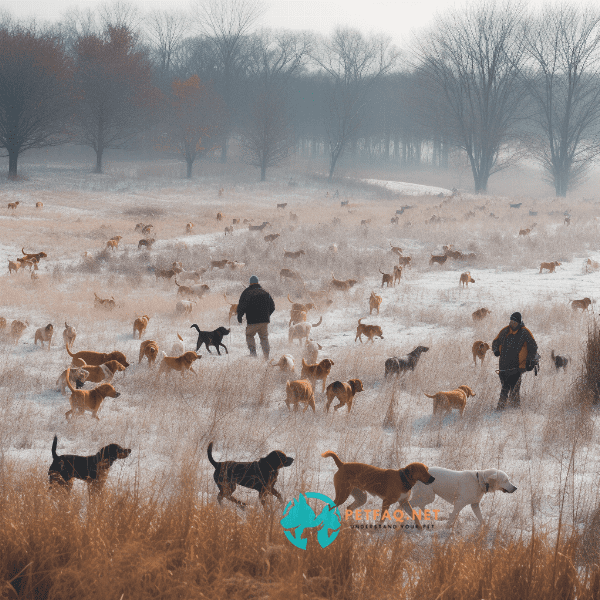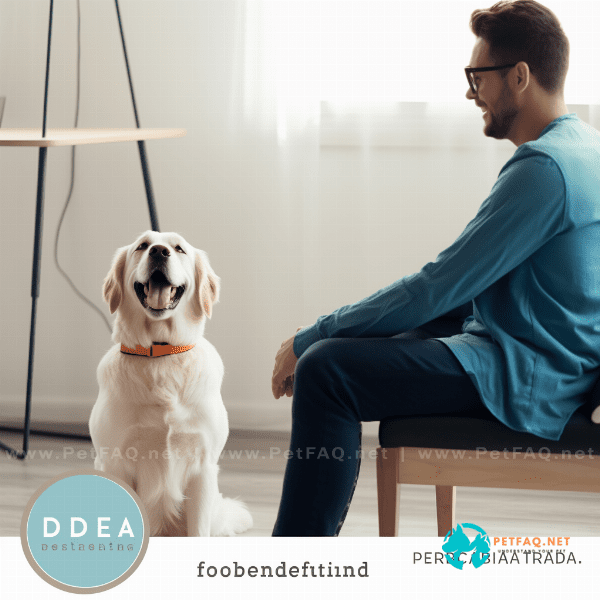Table of Contents
- Understanding the Benefits of Agility Training for Dogs
- Essential Equipment Needed for Agility Training
- Preparing Your Dog for Agility Training
- Basic Agility Training Techniques for Dogs
- Advanced Agility Training Techniques for Dogs
- Incorporating Positive Reinforcement in Agility Training
- Dealing with Common Issues During Agility Training
- Creating a Customized Agility Training Plan for Your Dog
- Tips for Competing in Agility Trials with Your Dog
- Making Agility Training a Fun Experience for You and Your Dog
Understanding the Benefits of Agility Training for Dogs
Agility training for dogs is a physical and mental activity that involves teaching your furry friend to navigate a series of obstacles such as tunnels, weave poles, and jumps in a specific order and time frame. Apart from being a fun activity, agility training offers a range of benefits for both the owner and their dog.
Physical Benefits
Agility training for dogs is an excellent way to improve their physical fitness. It involves various activities that engage the muscles and joints, helping to develop strength, balance, and flexibility. As a result, dogs that undergo agility training are less likely to develop obesity, arthritis, or other mobility issues.
Mental Benefits
Agility training is not just a physical activity; it also offers mental stimulation for your dog. As your dog learns new skills and techniques, they become more confident and better able to follow instructions. This type of training also helps to improve their focus and concentration, which can be particularly beneficial for dogs with behavioral issues.
Improved Bonding
Agility training provides an excellent opportunity for bonding between the owner and their dog. Training together can help to strengthen the trust and communication between the two, leading to a more fulfilling relationship.
In conclusion, agility training for dogs offers a range of benefits, both physical and mental, and can be a great way to bond with your furry friend. In the following sections, we’ll explore the equipment needed for agility training, how to prepare your dog for training, and the various techniques involved.

Essential Equipment Needed for Agility Training
Agility training for dogs requires specific equipment that is designed to challenge your dog’s physical abilities and improve their performance. Here are some of the essential pieces of equipment you’ll need for agility training.
Jumps
Jumps are an essential component of agility training for dogs. They come in various forms, including hurdles, tire jumps, and bar jumps. These obstacles are designed to challenge your dog’s jumping ability and improve their coordination.
Weave Poles
Weave poles are a series of upright poles that are arranged in a zigzag pattern. They help to improve your dog’s agility and balance by teaching them to weave in and out of the poles.
Agility Training Accessories
Agility training accessories include items like tunnels, chutes, and training cones. These accessories can be used to create a variety of training scenarios that will challenge your dog’s abilities and keep them engaged.
In conclusion, having the right equipment is essential for agility training for dogs. With the proper equipment, you can create a safe and challenging training environment that will help your dog reach their full potential. In the following sections, we’ll explore how to prepare your dog for agility training and the basic techniques involved.
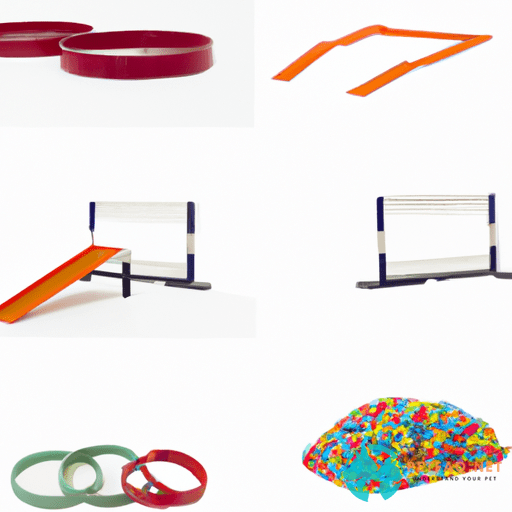
Preparing Your Dog for Agility Training
Before starting agility training for dogs, it’s essential to prepare your furry friend for the physical and mental demands of this activity. Here are some steps you can take to prepare your dog for agility training.
Physical Examination
The first step in preparing your dog for agility training is to have them undergo a physical examination. This will help to determine if your dog is fit enough for the rigorous activity involved in agility training.
Basic Obedience Training
Basic obedience training is crucial for agility training for dogs. Before starting agility training, your dog should have a solid understanding of basic commands such as “sit,” “stay,” “come,” and “heel.” This will make it easier for you to communicate with your dog during training.
Introduction to Equipment
It’s important to introduce your dog to the equipment gradually. Start with basic obstacles like jumps and tunnels and gradually introduce more challenging obstacles like weave poles and contact equipment. This will help your dog build confidence and develop their skills gradually.
Positive Reinforcement
Positive reinforcement is an essential component of agility training for dogs. Reward your dog with treats, praise, and playtime for successfully completing an obstacle. This will help to reinforce positive behavior and encourage your dog to continue learning.
In conclusion, preparing your dog for agility training is essential for their safety and success in this activity. By undergoing a physical examination, basic obedience training, and gradually introducing them to the equipment, your dog will be better prepared to tackle the challenges of agility training. In the following sections, we’ll explore the basic and advanced techniques involved in agility training for dogs.

Basic Agility Training Techniques for Dogs
Agility training for dogs involves a range of techniques that challenge your dog’s physical and mental abilities. Here are some basic agility training techniques you can start with.
Weaving
Weaving is another basic skill that involves your dog moving in and out of a series of upright poles. Start with a few poles and gradually increase the number as your dog becomes more comfortable. Make sure to reward your dog for successfully weaving through the poles.
Tunnels
Tunnels are an excellent way to introduce your dog to agility training. Start with a straight tunnel and gradually introduce curved tunnels as your dog becomes more comfortable. Make sure to reward your dog for successfully navigating through the tunnel.
Contact Equipment
Contact equipment like the A-frame and dog walk are essential components of agility training for dogs. Start by introducing your dog to low contact equipment and gradually increase the height as they become more comfortable. Make sure to reward your dog for successfully completing the contact equipment.
Pause Table
The pause table is a flat-topped table that your dog must jump onto and remain still for a set amount of time. This teaches your dog to focus and remain calm in a high-stress environment.
In conclusion, basic agility training techniques for dogs involve a range of activities that challenge your dog’s physical and mental abilities. By starting with basic techniques like jumping, weaving, and tunnels, you can help your dog build confidence and develop their skills gradually. In the following sections, we’ll explore advanced agility training techniques and how to incorporate positive reinforcement in your training.

Advanced Agility Training Techniques for Dogs
Once your dog has mastered the basic agility training techniques, it’s time to move on to more advanced techniques. Here are some advanced agility training techniques for dogs.
Sequencing
Sequencing involves putting together a series of obstacles in a specific order and time frame. This teaches your dog to follow commands and complete obstacles in a specific order.
Distance Handling
Distance handling involves teaching your dog to complete obstacles while you’re standing at a distance from them. This technique teaches your dog to rely on verbal and visual cues rather than physical prompts.
Directional Cues
Directional cues involve teaching your dog to respond to specific verbal or visual cues that indicate which direction they should move. This technique is essential for completing complex obstacle courses and competitions.
Backside Jumps
Backside jumps involve teaching your dog to jump over an obstacle from the backside. This technique requires your dog to have excellent spatial awareness and coordination.
Combination Obstacles
Combination obstacles involve combining two or more obstacles in a single sequence. This technique is essential for competition-level agility training for dogs.
In conclusion, advanced agility training techniques for dogs involve more complex sequences and obstacles that require a higher level of skill and coordination. By mastering these techniques, your dog will be able to compete at a higher level and take on more challenging courses. In the following section, we’ll explore how to incorporate positive reinforcement into your agility training.
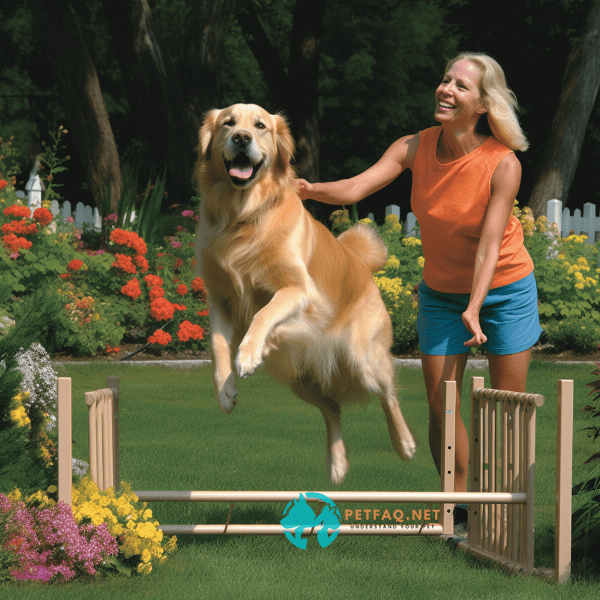
Incorporating Positive Reinforcement in Agility Training
Positive reinforcement is a crucial component of agility training for dogs. It involves rewarding your dog for good behavior, rather than punishing them for bad behavior. Here are some tips for incorporating positive reinforcement in your agility training.
Use Treats
Treats are an excellent way to reward your dog for successfully completing an obstacle. Make sure to choose healthy, low-calorie treats that your dog enjoys. Avoid using treats that are high in fat or sugar, as these can lead to weight gain and other health issues.
Use Verbal Praise
Verbal praise is another way to reward your dog for good behavior. Use a positive, upbeat tone of voice when praising your dog. This will help to reinforce positive behavior and encourage your dog to continue learning.
Use Playtime
Playtime is an excellent way to reward your dog for good behavior. Take a break from agility training and spend some quality time playing with your dog. This will help to strengthen the bond between you and your furry friend.
Avoid Punishment
Avoid punishing your dog for bad behavior. Instead, redirect their attention to a different activity or obstacle. Punishing your dog can lead to fear and anxiety, which can be detrimental to their overall health and wellbeing.
In conclusion, incorporating positive reinforcement in agility training for dogs is essential for their success and overall wellbeing. By using treats, verbal praise, and playtime to reward your dog for good behavior, you can create a positive and engaging training environment that will encourage your dog to continue learning. In the following sections, we’ll explore how to deal with common issues that may arise during agility training and how to create a customized agility training plan for your dog.
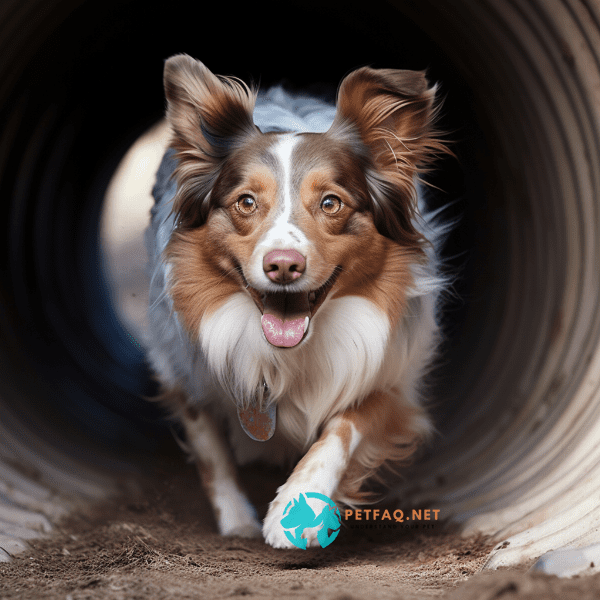
Dealing with Common Issues During Agility Training
Agility training for dogs can be a fun and rewarding activity, but it’s not without its challenges. Here are some common issues that may arise during agility training and how to deal with them.
Fear of Obstacles
Some dogs may be afraid of certain obstacles, such as the tunnel or the A-frame. To help your dog overcome their fear, start by introducing them to the obstacle gradually. Use positive reinforcement to reward your dog for successfully completing the obstacle. If your dog is still hesitant, try using a lure, such as a treat or toy, to encourage them to try the obstacle.
Lack of Focus
Some dogs may have difficulty focusing during agility training. To help your dog improve their focus, start by training in a quiet, distraction-free environment. Use positive reinforcement to reward your dog for good behavior, and gradually increase the level of distraction as your dog becomes more focused.
Overstimulation
Agility training can be exciting for your dog, but it’s important to avoid overstimulation. If your dog becomes overly excited, take a break and allow them to calm down. Use positive reinforcement to reward your dog for calm behavior.
Injuries
Injuries can occur during agility training, especially if your dog is not properly warmed up or if they attempt an obstacle that is too challenging. To prevent injuries, make sure to warm up your dog before each training session and introduce new obstacles gradually.
In conclusion, dealing with common issues during agility training for dogs requires patience, understanding, and proper training techniques. By using positive reinforcement, gradually introducing obstacles, and addressing issues as they arise, you can create a safe and engaging training environment for your furry friend. In the following section, we’ll explore how to create a customized agility training plan for your dog.
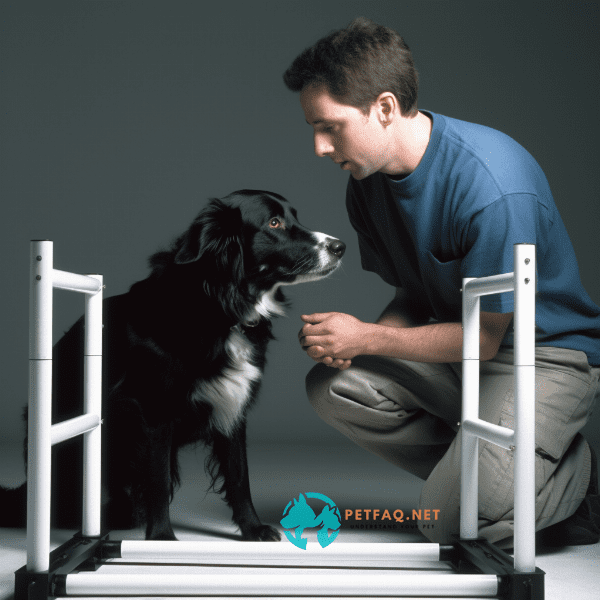
Creating a Customized Agility Training Plan for Your Dog
Agility training for dogs should be tailored to your dog’s individual needs and abilities. Here are some steps to help you create a customized agility training plan for your furry friend.
Assess Your Dog’s Abilities
The first step in creating a customized agility training plan is to assess your dog’s abilities. This includes evaluating their physical fitness, agility, and coordination. Based on this assessment, you can determine what obstacles and techniques your dog is capable of mastering.
Set Realistic Goals
Once you’ve assessed your dog’s abilities, it’s time to set realistic goals for their agility training. This includes setting short-term and long-term goals that are achievable based on your dog’s abilities.
Choose the Right Equipment
Choosing the right equipment is essential for your dog’s success in agility training. Based on your assessment of your dog’s abilities, choose equipment that will challenge them without being too difficult.
Develop a Training Schedule
Developing a training schedule is essential for ensuring that your dog makes progress in their agility training. This includes setting aside time for training each week and gradually increasing the duration and intensity of each training session.
Incorporate Positive Reinforcement
In conclusion, creating a customized agility training plan for your dog requires careful planning and consideration. By assessing your dog’s abilities, setting realistic goals, choosing the right equipment, developing a training schedule, and incorporating positive reinforcement, you can create a safe and engaging training environment that will help your furry friend reach their full potential.
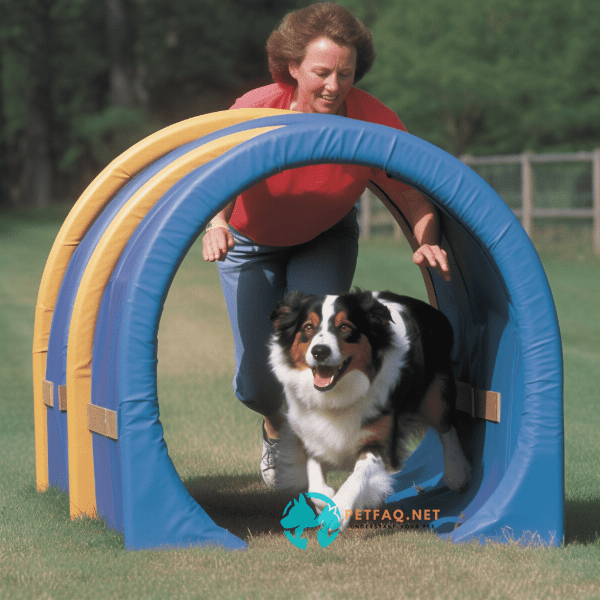
Tips for Competing in Agility Trials with Your Dog
Competing in agility trials with your dog can be a fun and rewarding experience. Here are some tips to help you prepare for your first agility trial.
Train for the Specific Course
Before competing in an agility trial, make sure to train for the specific course that you’ll be running. This includes practicing the specific obstacles and sequences that will be included in the course.
Prepare Your Dog for the Environment
Agility trials can be overwhelming for some dogs. To prepare your dog for the environment, practice in a busy and distracting environment, such as a park or dog park. This will help your dog get used to distractions and crowds.
Be Familiar with the Rules
Make sure to read and familiarize yourself with the rules and regulations of the agility trial. This includes knowing the course layout, the scoring system, and the time limits for each obstacle.
Be Prepared for the Unexpected
Agility trials can be unpredictable, so it’s important to be prepared for the unexpected. Bring plenty of water and treats for your dog, and be prepared to adjust your training plan on the fly.
Stay Positive and Have Fun
The most important tip for competing in agility trials is to stay positive and have fun. Remember that the primary goal is to have a fun and rewarding experience with your furry friend.
In conclusion, competing in agility trials with your dog requires preparation, dedication, and a positive attitude. By training for the specific course, preparing your dog for the environment, being familiar with the rules, being prepared for the unexpected, and staying positive and having fun, you can create a fun and rewarding experience for both you and your furry friend.
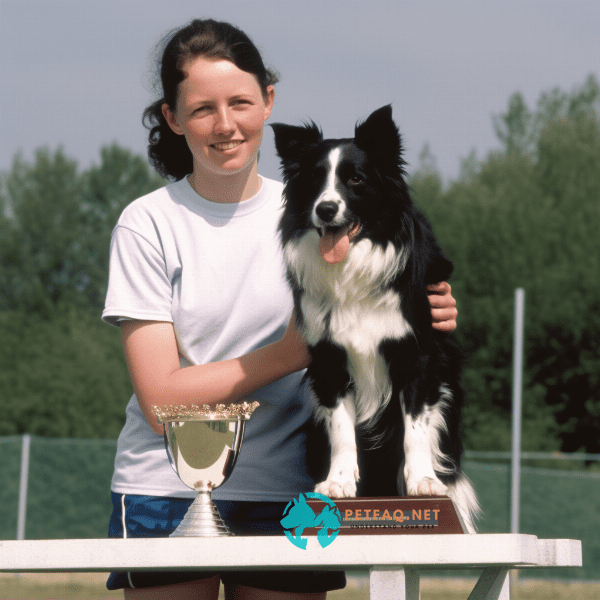
Making Agility Training a Fun Experience for You and Your Dog
Agility training for dogs can be a fun and rewarding activity for both you and your furry friend. Here are some tips to help you make agility training a fun experience for you and your dog.
Use Positive Reinforcement
Positive reinforcement is essential for making agility training a fun experience for your dog. Use treats, verbal praise, and playtime to reward your dog for good behavior and to reinforce positive behavior.
Keep it Fun and Engaging
Agility training should be fun and engaging for your dog. Make sure to keep the training sessions short and to incorporate playtime and other fun activities into your training sessions.
Take Breaks
Taking breaks is essential for preventing burnout and keeping your dog engaged in the training process. Take breaks to play, take a walk, or simply relax with your furry friend.
Incorporate Variety
Incorporating variety into your agility training sessions can help to keep your dog engaged and prevent boredom. This includes changing up the obstacles, using different training techniques, and incorporating games and other fun activities into your training sessions.
Be Patient and Understanding
Agility training takes time and patience, so it’s important to be patient and understanding with your furry friend. Remember that each dog learns at their own pace and that it’s important to go at your dog’s pace.
In conclusion, making agility training a fun experience for you and your dog requires patience, understanding, and a positive attitude. By using positive reinforcement, keeping the training sessions fun and engaging, taking breaks, incorporating variety, and being patient and understanding, you can create a fun and rewarding training environment that will help your furry friend reach their full potential.

Frequently Asked Questions (FAQs) about Agility training for dogs:
1. What are the benefits of agility training for dogs?2. How do you get started with agility training for dogs?
3. How do you ensure your dog's safety during agility training?
4. How can I incorporate agility training into my dog's exercise routine?

